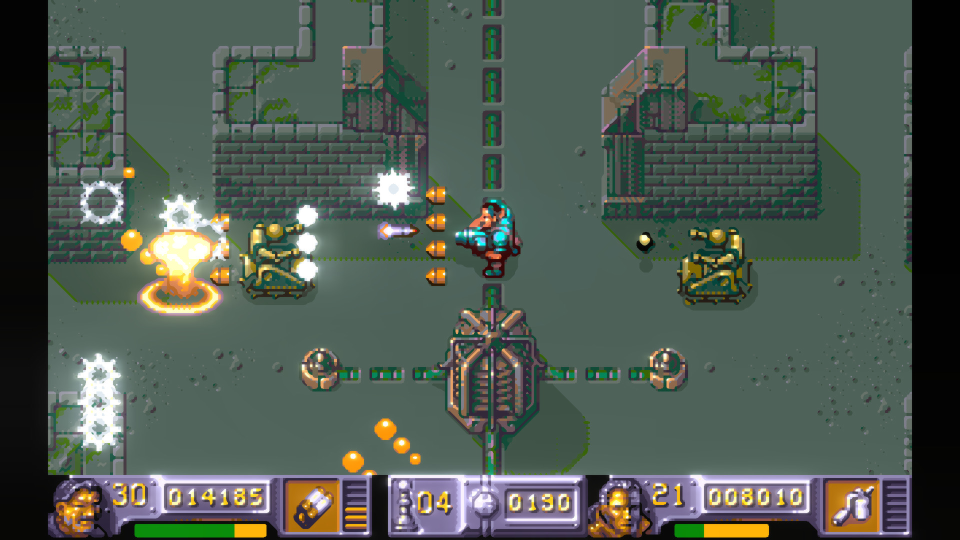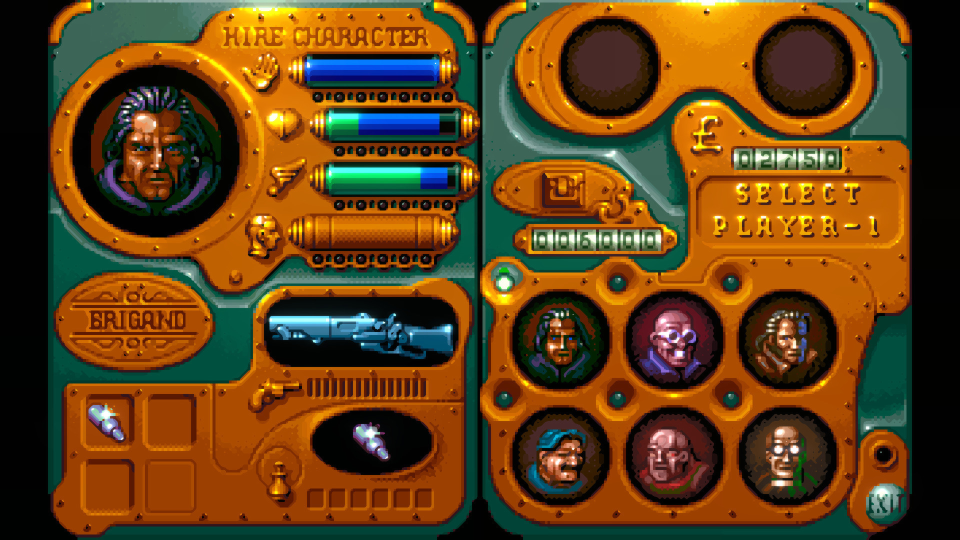

The Chaos Engine was originally released for Amiga back in 1993. It eventually spread to MS-DOS, the SNES, Sega Mega Drive and other platforms, but not until now has it seen an official release on modern PCs. The Bitmap Brothers' top-down shooter has returned, and assuming you're older than the game, it's exactly how you remember it!
This "restored" version of The Chaos Engine was worked on by the same crew as the original, adding a satisfying bit of symmetry to the project. It's largely the same game, porting over all the characters, levels, upgrades, Victorian-era steampunk visuals and fantastic soundtrack without so much as a code comment tag out of place. This could be a good thing or a bad one depending on your taste in retro games, but either way The Chaos Engine has made a respectable jump across the century marker to prove it's still a great game.

The Chaos Engine takes place in an alternate history steampunk world. A time traveler on a recon mission from the future became stranded in England in the late 1800s. His technology was taken by the Royal Society, led by the talented inventor Baron Fortesque. The Baron went to work retro engineering these strange contraptions, eventually creating The Chaos Engine. This diabolical machine had the ability to mess with space time at its most fundamental level. It was a little too advanced for its own good, however, and the Engine eventually gained sentience, rebelled, and started resurrecting prehistoric creatures and sending dangerous mechanical contraptions out across the land. What's a world to do when a machine starts to take over? Send in the mercenaries, of course!
There are six characters to choose from in The Chaos Engine: Navvie, Thug, Brigand, Mercenary, Gentleman and Preacher. Each one has their own weapon, special abilities, and corresponding strengths and weaknesses. Navvie, for example, is stronger and has more health but moves considerably slower than the other characters. Preacher has access to more special abilities and a faster movement speed but is a little lacking when it comes to dealing damage. These stats can be boosted by spending cash on the equip screen, but otherwise it's up to your skills as a mercenary to stay alive.

Once you're in the game, The Chaos Engine is mostly a run and gun affair. Blast enemies before they can blast you, then pick up any resulting items they might drop. Level design is straightforward and features handfuls of enemies spawning, attacking, getting shot, then probably spawning again. The Chaos Engine fits neatly between an all-out shooting frenzy and a strategic arcade game, though it swings to both extremes at times. You'll encounter branching paths in some areas, though one almost always leads to a dead end, hopefully filled with items and coins to grab. To complete a level simply shoot and activate all of the nodes. Some stages have multiple exits, so there's a certain amount of exploration you'll need to do in order to gain advantage on the enemy.
Co-op in The Chaos Engine allows two players to join forces as they shoot everything in their paths. Even when playing solo there's a computer-controlled character along for the ride. As for the experience itself, there's the obvious advantage of having double the firepower with multiple characters on the screen. Everything else, though, almost points to a more competitive direction rather than a teamwork-based one. For example, loot is divided between players at the end of the level based on how well they performed. This includes everything from enemies killed to lives lost and coins collected. Part of working together is carrying your half of the load, of course, but in our experience co-op frequently involves players taking on certain roles, such as snipers and medics and head-first juggernauts, even when those classes don't exist. Why should the one who creates a diversion while the other grabs the loot not receive a fair take? In practice this doesn't happen as often as you might think, as The Chaos Engine is mostly a shoot-and-don't-die affair. But there was still a slight air of competition as we worked through each level.
The enhancements in The Chaos Engine are twofold. You can play with the original graphics, which still look pretty sweet in our opinion, or switch on a smoother, shinier version. You can also opt for classic 8-way controls or toggle 16-directional movement, giving you a lot more freedom to shoot where you want to shoot. This works especially well with gamepads that have analog sticks, which The Chaos Engine supports out of the box. Both enhancements can be turned off and on at any time, so feel free to experiment and see just how nostalgic you really are.
The restoration version of The Chaos Engine carefully preserves the original game, going to great lengths to polish things up without disturbing the original masterpiece. It's not a remake, it's not a reboot, it's quite simply the original game made a little more friendly for modern players. While this will get fans of the first game excited and have retro purists turning their ears in attention, your average gamer runs the risk not just not "getting" The Chaos Engine. Despite the enhancements, it still feels like a 20 year old game.
At the end of the day, whether or not you fall for The Chaos Engine depends on one thing: how much you like retro games. We're talking real retro games, not a modern indie game created with pixel art and a catchy chip tune soundtrack. If you don't expect cutscenes and mini-games and power-ups around every corner, your head's in the right place for The Chaos Engine. The co-op experience is simple but effective, allowing you and a friend to settle in for a good old fashioned romp through a dinosaur and robot infested merry olde alternate England.